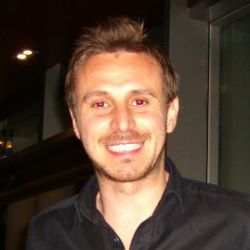Improving SPLIT-STED Super-Resolution Imaging with Tunable Depletion and Excitation Power
Simone Pelicci, Giorgio Tortarolo, Giuseppe Vicidomini, Alberto Diaspro, Luca Lanzanò (see publication in Journal )Abstract
The SPLIT approach is a simple and efficient way to improve the spatial resolution of a super-resolved STED multi-dimensional image, i.e. a STED image in which an additional dimension encodes spatial information. Recently, we have demonstrated that the SPLIT can be applied to multidimensional STED images obtained with tunable depletion power. In this SPLIT-STED implementation, the additional dimension is represented by the depletion power, a parameter that can be easily tuned on any STED microscope. In this work, we introduce a modified implementation in which we tune also the excitation power. The tuning of the excitation power is used to modulate the number of photons collected for each STED image. We show that the modified SPLIT-STED method produces an improvement of spatial resolution for very different tuning patterns of the excitation intensity, improving the versatility of the SPLIT-STED approach. Interestingly, we find that the extent of photobleaching can be modulated by the excitation pattern, as it depends on the simultaneous impact of high STED and excitation powers. Thus, the tuning of the excitation power can improve applicability of the method to live cell imaging, potentially minimizing the photobleaching of the fluorophores and the phototoxicity on the biological samples during a SPLIT-STED acquisition. We apply the modified SPLIT-STED method to super-resolution imaging of nuclear periphery, in both fixed and live cells.
